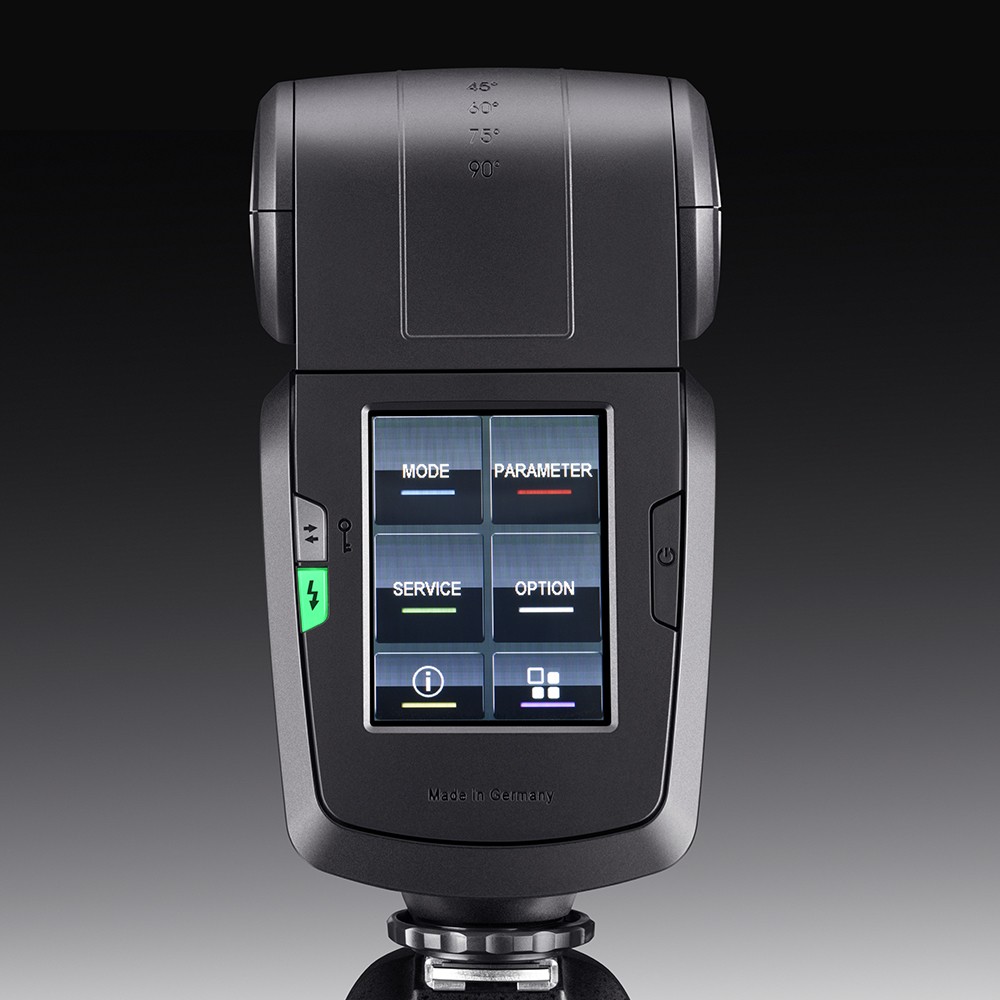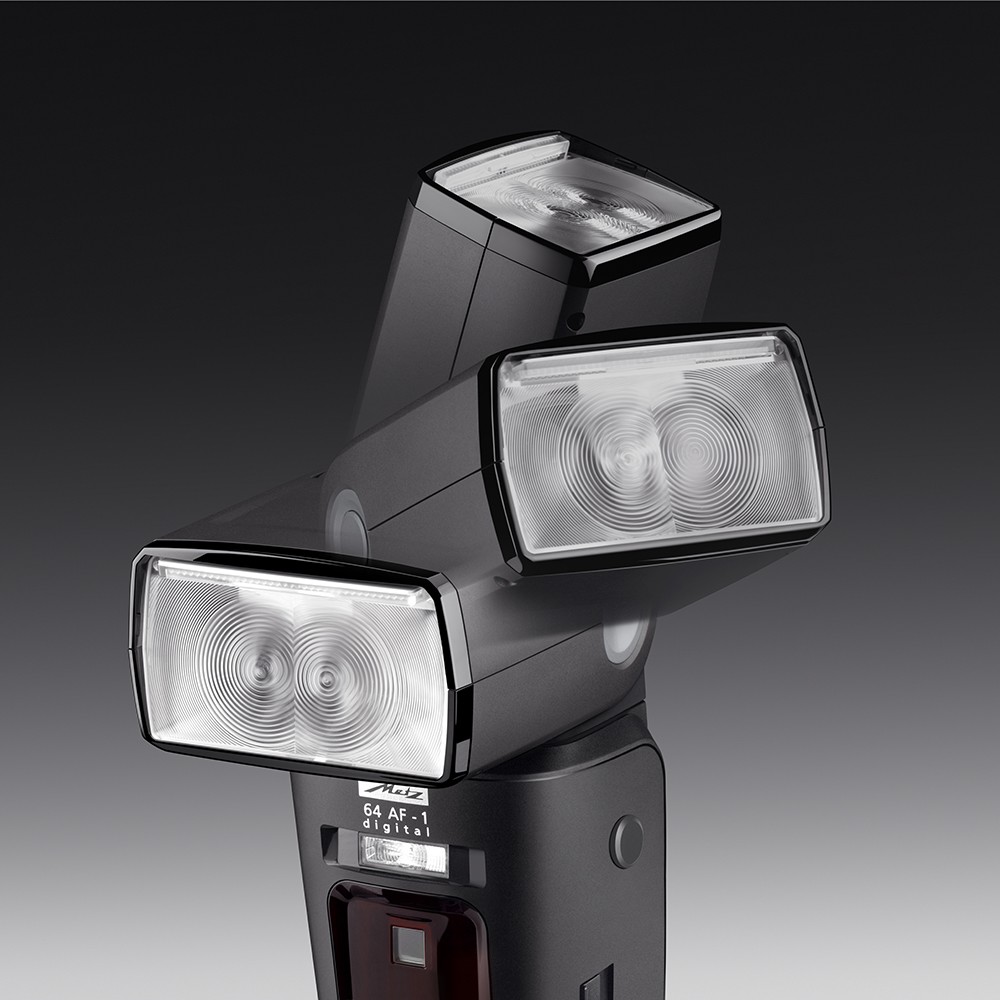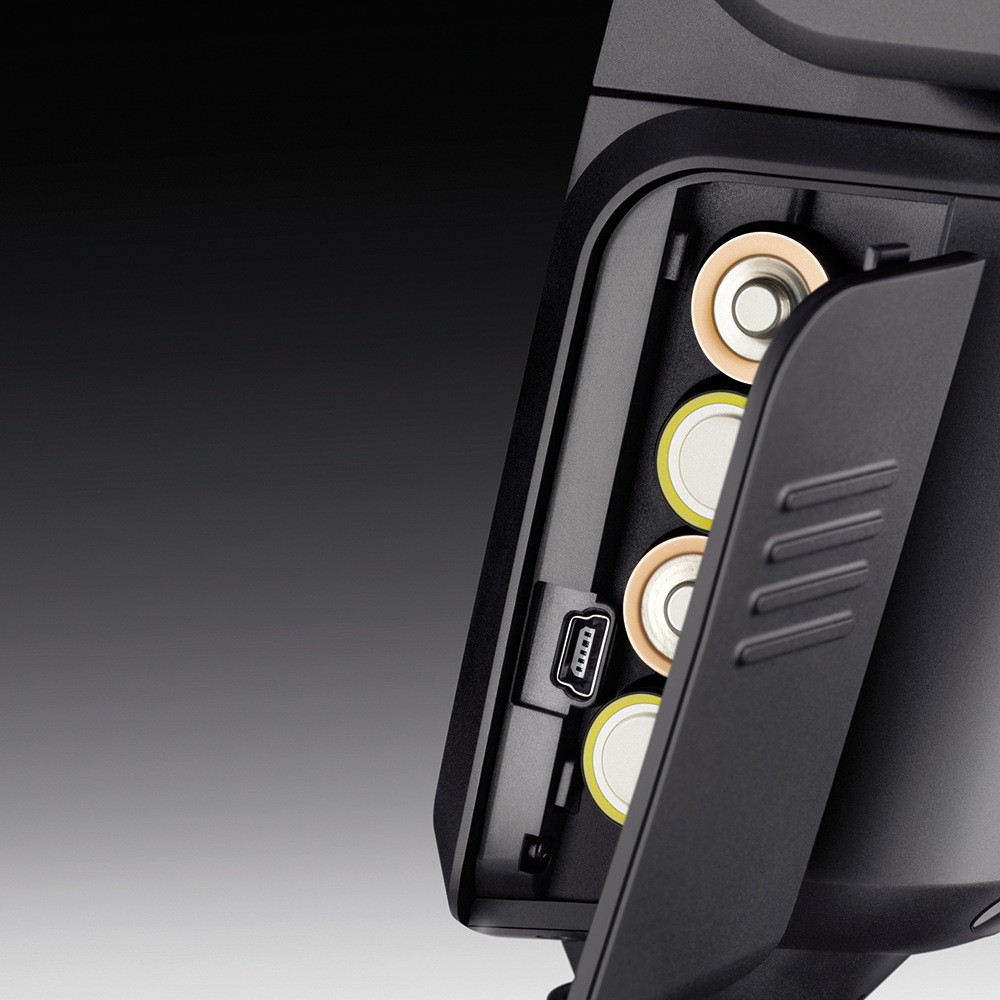First Flash with Color LCD Touchscreen
Review by Erik Vlietinck
It says, “Made in Germany” on the box, and as cliché as that may be, it shows. The mecablitz 64 AF-1 digital is as dependable as its minimal, clean and business-like design suggests. It’s probably better than any camera-brand flash as well.
Besides TTL mode, the 64 AF-1 offers: a flash-ready indication in the camera viewfinder; automatic flash sync speed control; manual flash TTL exposure correction; pre-flash TTL and ADI metering (on my Sony model); extended and spot zoom mode; automatic HSS for TTL and manual; wireless remote flash mode; programmed auto-flash mode; and a full-color control touchscreen. It’s a mouthful, but then again, this is Metz’s flagship system flash.

It starts with that touchscreen: a color screen that takes up most of the back area and rotates with the orientation of the flash. It shows only the information that’s relevant for the shooting mode of the moment, and lets you control everything using familiar tapping.

As with most mecablitz models, the 64 AF-1 comes with a smaller reflector underneath the main flash head, which serves as a pre-flash or fill flash. You can turn this off completely using the idiot-proof, but perhaps a bit rigid, menu system, or by positioning the head slightly lower than 90°.
As you might expect from a “Mercedes” of the speedlight world, the flash output curve was identical at all power levels throughout the quick-fired, 15 test flashes per level I put it through. The 64 AF-1 supports an output as low as 1/256, which is great for freezing fast-moving subjects. And while high-speed sync mode can result in thermal issues quite quickly, the mecablitz was much more robust in this respect than some other brand-name speedlights, including the Canon Speedlight 600EX.
Typical Metz features were all there: The modeling light, a 3-second, high-frequency stroboscopic flash, is designed to help with the evaluation of a lighting setup, and the extended zoom mode helps produce softer light circles. There’s flash bracketing in TTL and automatic mode, and four programmable buttons are available to store a combination of flash parameters—very handy for recurring lighting setups.

The modeling light didn’t do much for me. I found it just as easy to use a continuous lamp fixture to assess the light effect at the spot where I wanted to use the flash; but, on location, I can imagine the 3-second burst could be helpful. What I found more of a boon is the extended zoom mode, which comes close (but not quite) to the effect you get from using a honeycomb grid to generate a soft light circle.
As with some other flashes on the market, the mecablitz 64 AF-1 digital shows you the values for minimum and maximum distance range in TTL and TTL HSS modes. Unlike other flashes, the Metz also shows a value in manual mode. In this mode, it shows how far from the subject you should be for a correct exposure, leaving little guesswork for a perfect shot.
One thing I couldn’t try out is the 64 AF-1’s support for Sony’s radio transmission system, both in CTRL and CTRL+ modes. To use it, you have to use a master flash mounted on the camera with slave units that are controlled by the reflector of the master flash—an optical system that even supports flash grouping. I couldn’t test that feature as I only had the mecablitz 64 AF-1 digital at my disposal. ■







Hi Chris,
Thanks for posting your review of the Metz 64 AF-1. I currently am using the 44 AF-2 with my Sony RX10 III. I would like to add one more flash to have more flexibility for various lighting situation. And the 64 Af-1 would seem to fill the bill as my main flash and use the 44 AF-2 as a slave unit. I’ve always been a big fan of Metz. I’ve always been a bit puzzled why I don’t see more people use them. They are less expensive than the dedicated camera flash units and are of superior build quality in my opinion.